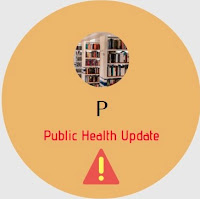#Risk #Assessment #Report using #TIPRA - 2nd edition For Avian #influenza clade 2.3.4.4b #H5N1 #B313 viruses - Executive Summary (#WHO)
{Excerpt}
1. Background
A risk assessment exercise using the Tool for Influenza Pandemic Risk Assessment (TIPRA) was conducted for Clade 2.3.4.4b A(H5N1) genotype B3.13 virus in Aug – Oct 2024.
From late 2023, unexplained illnesses were reported in dairy cattle across multiple states in the United States.
Following those events, detection of avian influenza A(H5N1) in dairy cattle from Texas was confirmed on 25 March 2024.
As of 9 December 2024, the virus has been detected in 720 dairy cattle herds across 15 states, according to the United States Department of Agriculture (USDA), with a total of 47 human infections from poultry and dairy cattle sources, excluding 11 human cases from Washington state, that might belong to genotype D1.1, also reported.
Wild and domestic animals (e.g., cats, raccoons) near infected herds have been affected as well.
The outbreak remains uncontrolled.
Due to the unprecedented spread of the virus among dairy cattle and associated human cases, a pandemic risk assessment was warranted to evaluate its potential impact and identify research gaps.
2. Objectives
• Characterize the pandemic risk from Clade 2.3.4.4b A(H5N1) genotype B3.13 viruses.
• Identify knowledge gaps for Clade 2.3.4.4b A(H5N1) genotype B3.13 viruses.
• Recognize strengths, limitations, and room for improvement of the risk assessment protocol of TIPRA for further facilitation and standardization.
• Engage international stakeholders in TIPRA to help facilitate information sharing for current and future assessments.
3. Risk Question
What is the overall public health risk of Clade 2.3.4.4b A(H5N1) genotype B3.13 viruses, as compared to other viruses that were subject to previous TIPRA exercises?
For this risk question, two components were assessed:
-- the likelihood of the viruses acquiring the capacity for sustained human-to-human transmission and
-- the public health impact if human-to-human transmission were to occur.
4. Risk Assessment
Method
• Tool Applied
The Tool for Influenza Pandemic Risk Assessment (TIPRA) was used to assess the above risk question.
As per Step 1 in TIPRA, epidemiological and virological criteria triggered a risk assessment of Clade 2.3.4.4b A(H5N1) genotype B3.13 viruses.
The triggering was based on the following the internal epidemiological and experimental information provided from multiple stakeholders provided and literature review:
• The first detection of avian A(H5N1) viruses from dairy cattle,
• The sporadic but ongoing detection of human cases of avian A(H5N1) infection,
• The multiple outbreaks and spread of avian influenza A(H5N1) viruses among dairy cattle,
• Specific genotypes of avian influenza A(H5N1) viruses isolated among dairy cattle, human, birds, and wild animals,
• Molecular signatures associated with better replication in mammals.
The risk was characterized using the statistical model described in TIPRA.
Technical experts (TEs) scored risk elements based on evidence (a virus profile1) available about the virus at the time of assessment, and discussions based on the scores were used to characterize the risk and develop recommendations.
Ten risk elements are described in the TIPRA guidance. The ten risk elements and their relevant weights per component (likelihood and impact) were then applied and risk scores generated.
Summary of relative risk evaluation result of Clade 2.3.4.4b A(H5N1) genotype B3.13 viruses
-- Date of Assessment: Risk assessment teleconference date on 22 August and 10 October 2024
-- Final risk scores: Likelihood: 5.62, Impact: 4.25
-- Countries that have reported human infections: United States of America
Risk evaluation:
- Clade 2.3.4.4b A(H5N1) genotype B3.13 viruses have moderate likelihood of developing sustained human-to-human transmission capacity with low to moderate impact on the human population if the event occurs.
- Confidence level: Moderate confidence for likelihood, moderate confidence for impact. Risk assessed was underpinned by the information available in October 2024 and the knowledge provided by TEs.
(...)
Source: World Health Organization, https://cdn.who.int/media/docs/default-source/influenza/tipra/tipra-risk-assessment-reports/outcome-summaries/15.-oct-2024_h5n1-b3.13__summary-report.pdf?sfvrsn=65ed5a2a_3
____


Comments
Post a Comment